The peak performance of Hungarian applied art at the time was the St. Stephen's Hall, completed in 1900 in the Royal Palace, and this is convincingly confirmed by fresh recordings of the now re-created room, which will open in two weeks. The Várkapitányság responsible for the reconstruction has so far only shown parts of the interior being prepared, but now we can see the details of the richly decorated, sophisticatedly executed room built in and recreated.
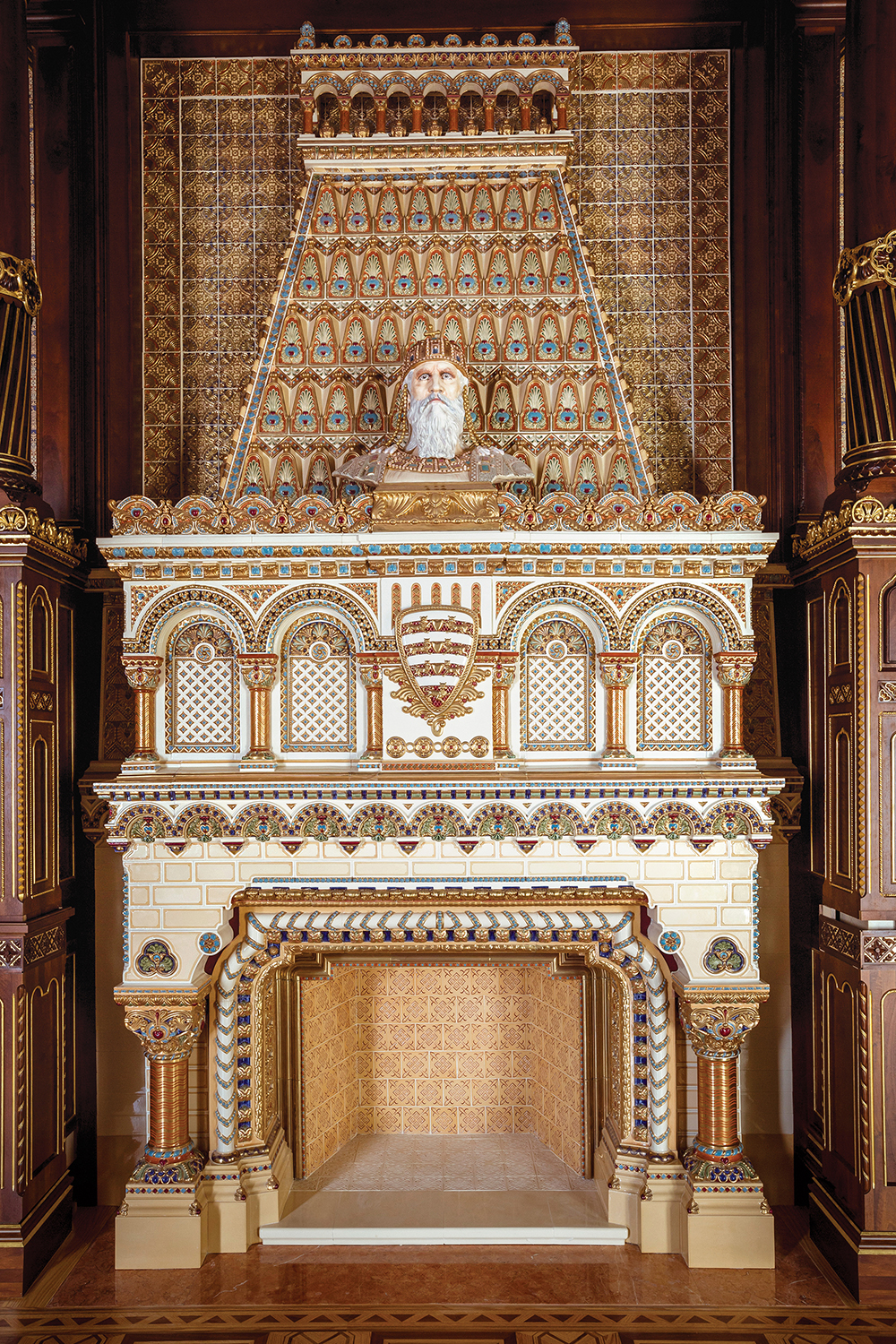
The rebuilt Zsolnay fireplace with the bust of St. Stephen on it (Photo: Várkapitányság)
For the first time, we can see the Zsolnay fireplace in a photo, which has already been installed in its place, the central work of the hall. Not only its construction, but also its dimensions are impressive: the work is 4.5 meters high and 2.5 meters wide, and it was made both at the turn of the century and now in the factory of Pécs. Its special feature is that it consists of more than 600 pieces and more than a hundred kinds of elements had to be re-made for it. The bust of St. Stephen, originally created by Alajos Strobl, has already been placed on the main ledge of the fireplace.
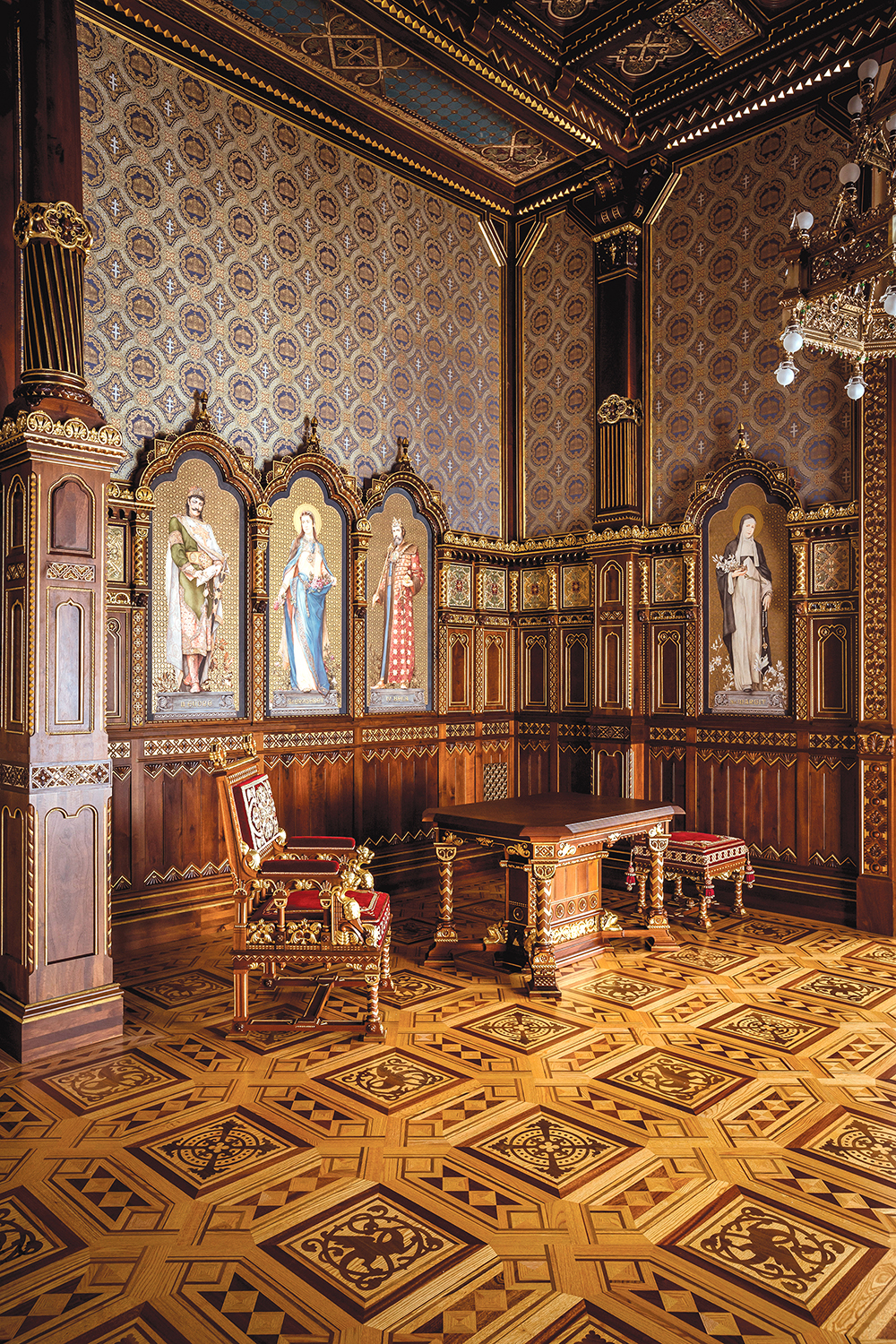
Part of the re-created St. Stephen's Hall (Photo: Várkapitányság)
Now, for the first time, we can see, along with other parts of the room, the meticulously crafted, inlaid parquet decorated with dragon motifs, as well as the ornate walls covered with ceramics and wood. You can also see a portion of the ornate coffered ceiling, as well as a part of one of the chandeliers decorated with gemstones. It is also clear from the pictures that have just been published that the pyrogranite pictures depicting the kings and saints of the Árpád Dynasty have also been incorporated in their place.
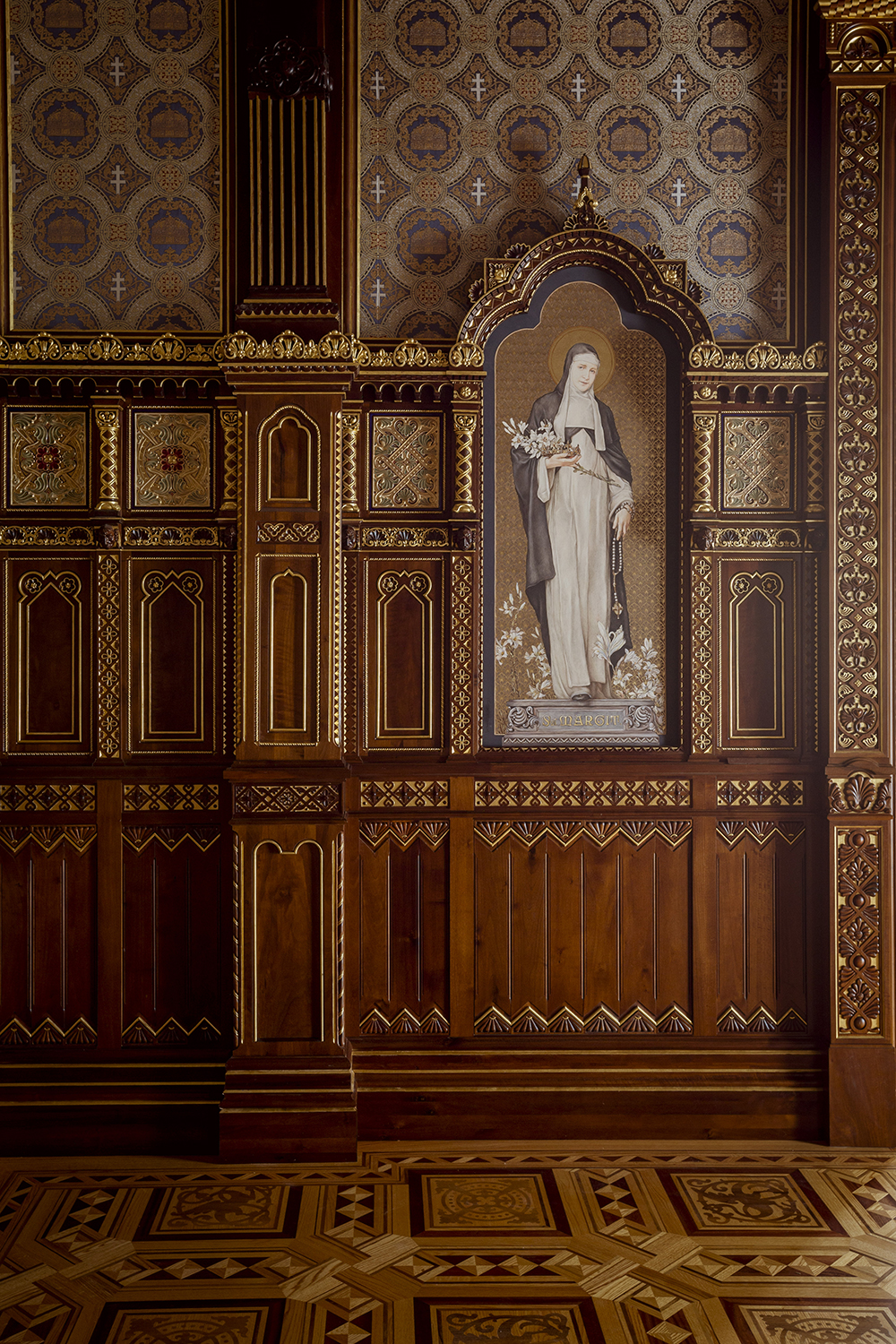
Pyrogranite image of St. Margaret in the St. Stephen's Hall (Photo: Várkapitányság)
The special porcelain paintings are based on the original paintings of the painter Ignác Roskovics, which can still be seen in the Parliament, and depict the defining personalities of the Árpád Dynasty: the figures of Béla I, Saint Ladislaus, Coloman the Learned, Béla III, Andrew II, Béla IV and Andrew III and Prince St. Emeric, St. Elizabeth and St. Margaret appear in the special techniques.
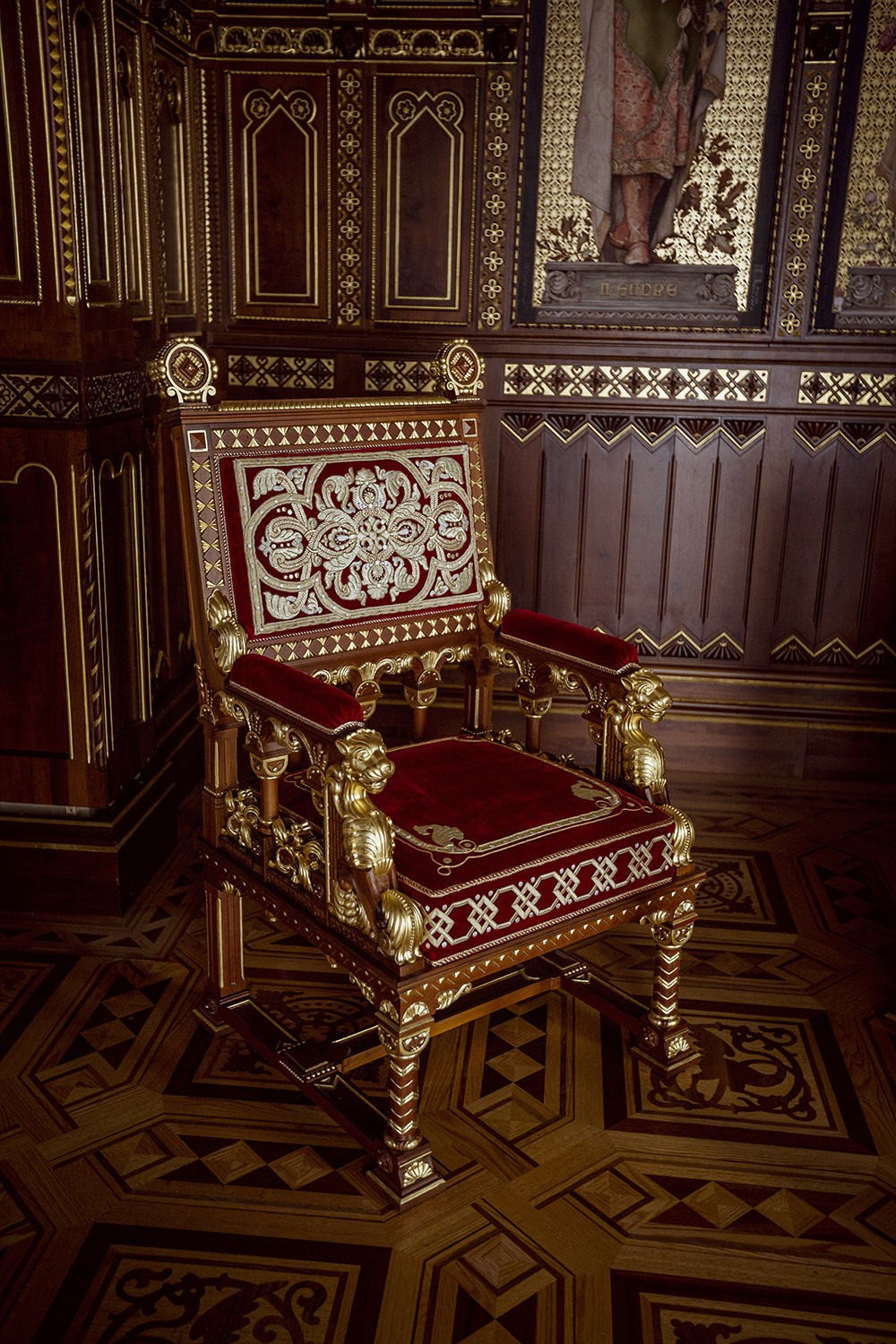
Ornate chair in the St. Stephen's Hall (Photo: Várkapitányság)
Named after the founding king of the state, the hall at the turn of the century was one of the most significant interiors of the Royal Palace of Buda, dreamed up by Alajos Hauszmann. The architect asked the outstanding creators of contemporary Hungarian applied art to create the interior decorations.
The curtain upholstery was also re-created based on the original (Photo: Várkapitányság)
According to the announcement of the Várkapitány, which was also sent to our newspaper, the reborn St. Stephen's Hall will open its doors on 20 August, and the exhibition related to the historical hall, which has been re-created in its original form, will also be open to the public. The exhibition not only shows how the hall, which is one of the top performances of Hungarian applied art of the time, was created, but also provides an insight into the current heritage of King St. Stephen and its contemporary artistic interpretation. The exhibition will feature internationally significant, exciting works. Those interested can visit the hall and the exhibition free of charge in the first days - reads the announcement of the Várkapitányság.
The road leads to the St. Stephen's Hall, reconstructed with complete historical fidelity, through a special exhibition. The row of rooms on the first floor of the southern connecting wing of the Buda Palace provides the visitor with an introduction until he reaches the magnificent room.
The exhibition entitled St. Stephen's Hall - The Miracle of Buda Castle guides the visitor along works that provide a significant aesthetic experience, while the emerging tradition becomes really important from the point of view of the present. One of the special features of the exhibition is the moving and talking hologram, which depicts the figure of King St. Stephen. So far no similar installation has been seen in Hungary.
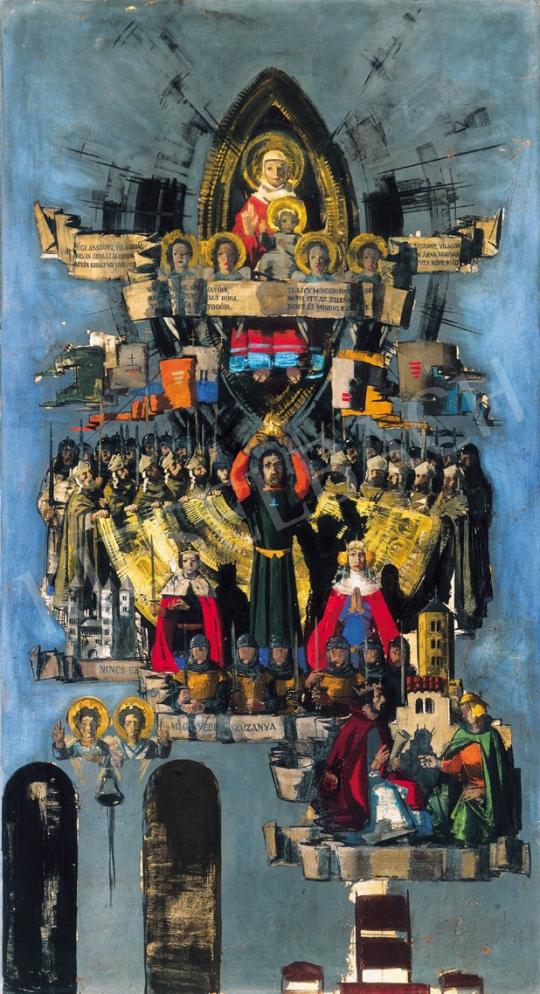
Vilmos Aba-Novák's painting has not been shown at an exhibition so far (Photo: Várkapitányság)
The painting of Vilmos Aba-Novák is a sensation, the existence of which was known in art history, but has not been seen in an exhibition until now. The work, born in 1936, depicts when St. Stephen offers the crown to the Virgin Mary. The painting was originally made as a fresco design of the church in Városmajor, Budapest, and in 1938 he received the first prize at the St. Stephen's Exhibition of the Hall of Art.
In addition to paintings, graphics, sculptures, installations and short films, we can also see St. Stephen's great herma made in Rome in 1635, the special pedestal of which was made by the greatest sculptor of the period, Giovanni Lorenzo Bernini. One of the largest hermas in the world has been kept in the cathedral of the Diocese of Zagreb since its creation, and for the first time we can admire it in Budapest.
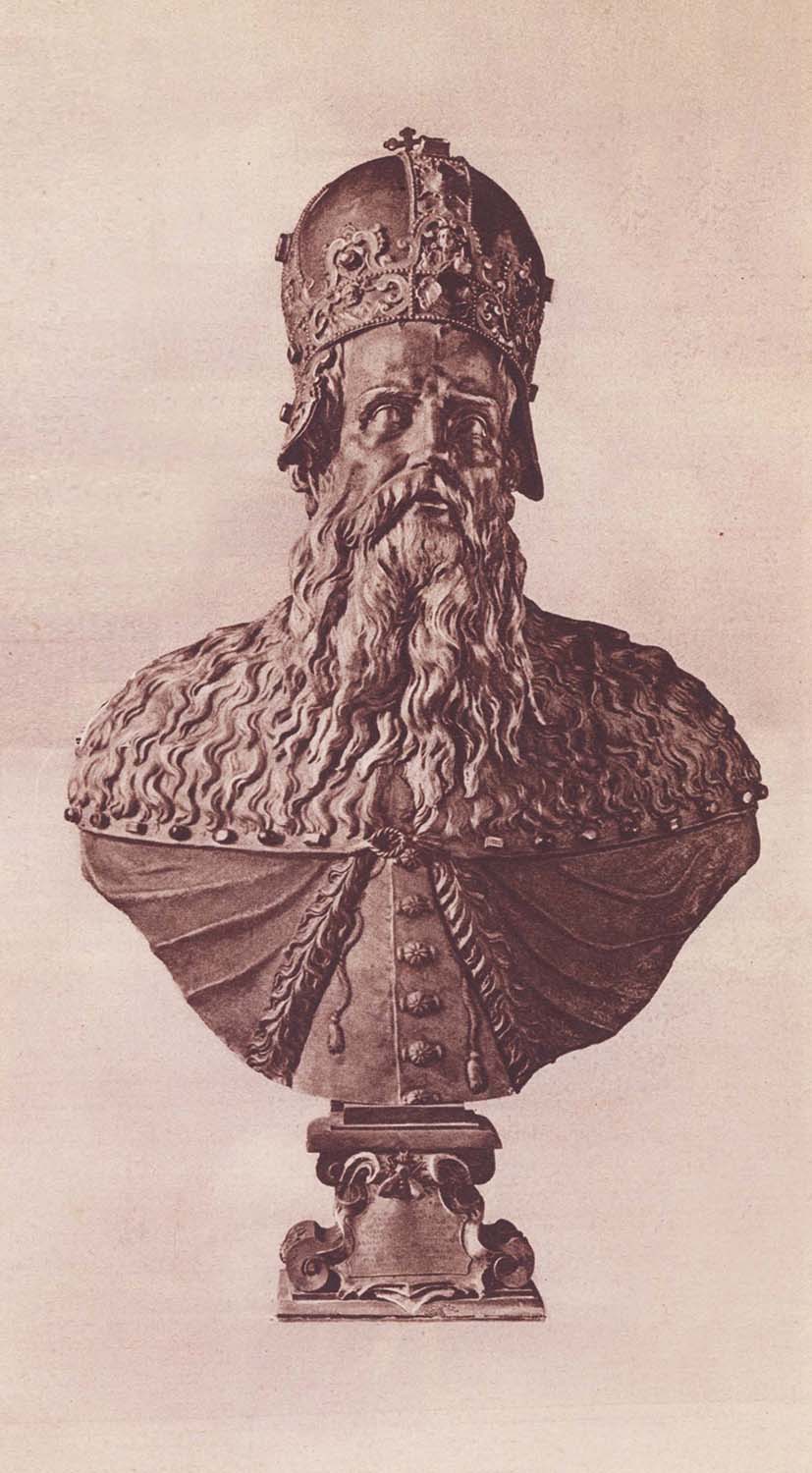
The herma of St. Stephen is kept in the cathedral of Zagreb, we will see it for the first time in an exhibition (Photo: Várkapitányság)
The artist Sámuel Havadtőy created the installation built on ten gates, based on the almost thousand-year-old text of King St. Stephen's admonitions to Prince Imre, specifically on this site. The work also includes a short film, in which the icons of Hungarian cultural life also tell a sentence close to them from the ten chapters of the work. In the interpretations of Albert-László Barabási, András Berecz, Gyula Bodrogi, Csaba Böjte, Krisztina Egerszegi, Sámuel Havadtőy, Erika Miklósa, Zsuzsa Péreli, Zsuzsa Rakovszky and Tamás Vásáry, the sentences of Admonitions seem to be especially topical.
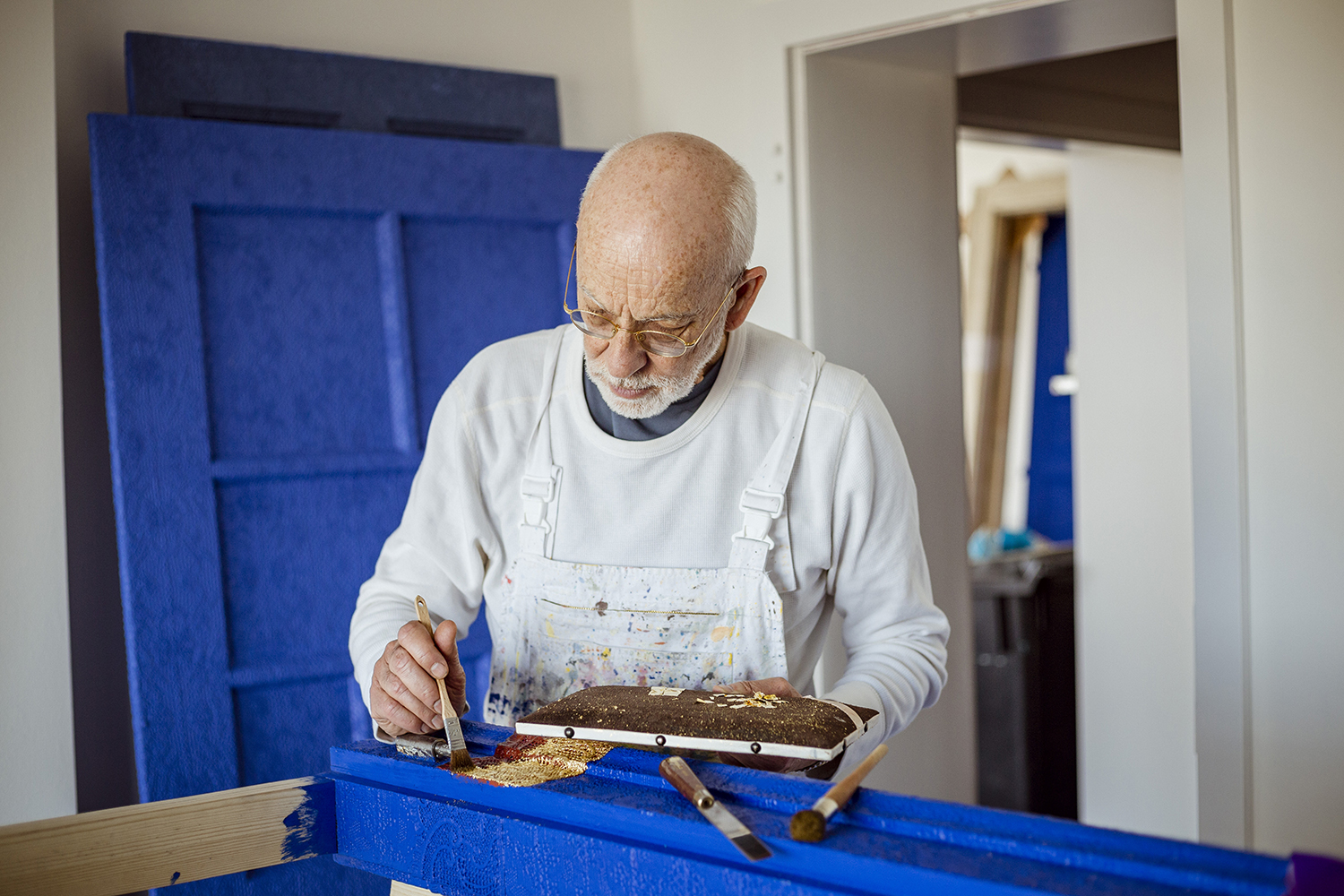
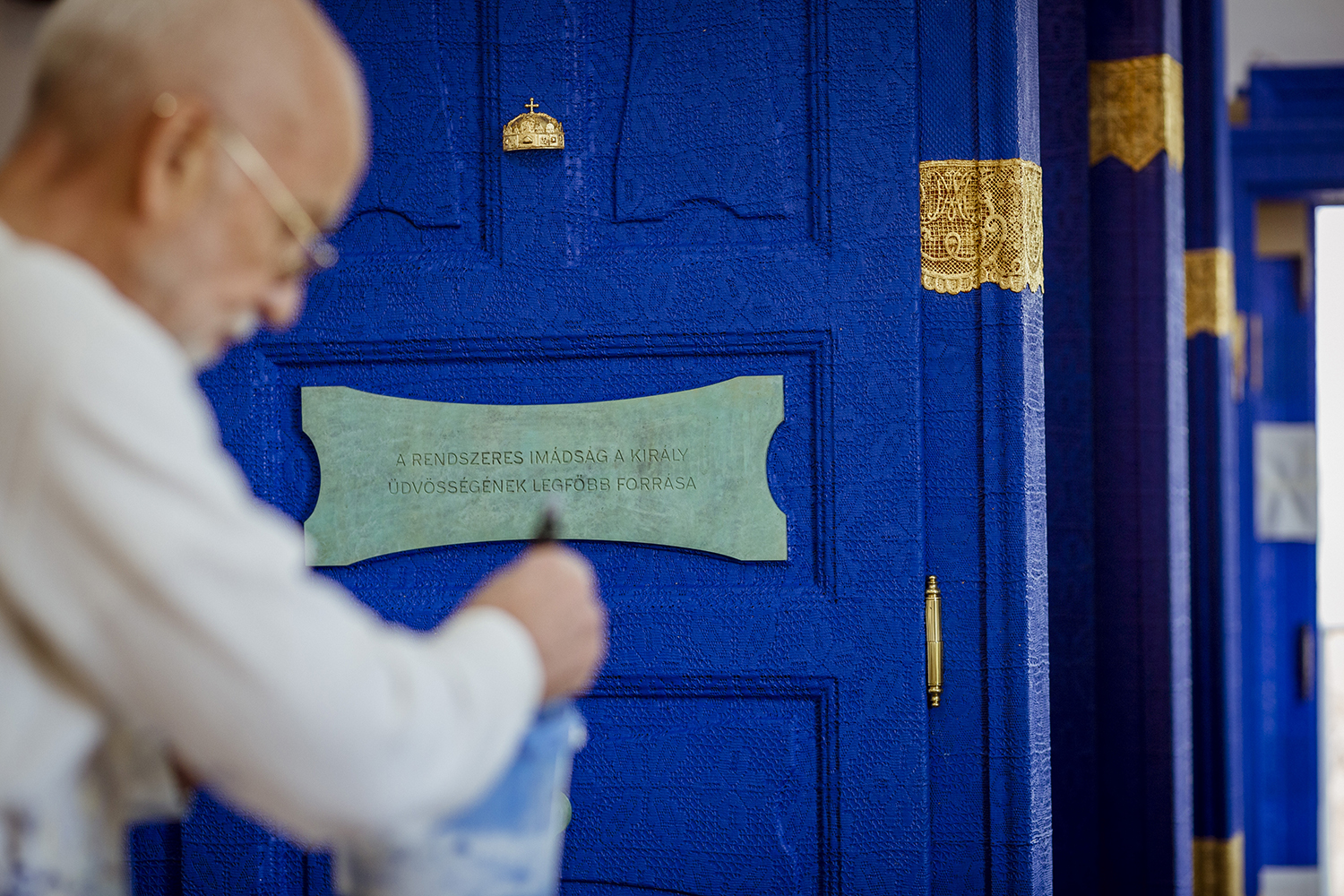
The artist Sámuel Havadtőy created an installation for the exhibition based on the admonitions of Saint Stephen (Photo: Várkapitányság)
The curator of the exhibition is Gábor Gulyás, a philosopher and aesthete who has made a name for himself in Hungarian art life as the leader of three large institutions (Ferenczy Museum Center in Szentendre, Hall of Art in Budapest and MODEM in Debrecen), and has organized about seventy significant exhibitions in Hungary and abroad .
The historical hall and exhibition, which opens on 20 August, is free to visit for the first few days, with abbreviated group guided tours starting quarter-hourly from 10 a.m. You can register in advance for the announced dates on szentistvanterem.hu. Visitors are also welcome without a reservation, who can join the on-site tour in limited numbers based on the order of arrival.
Nyitókép: a Szent István-terem részlete (Fotó: Várkapitányság)

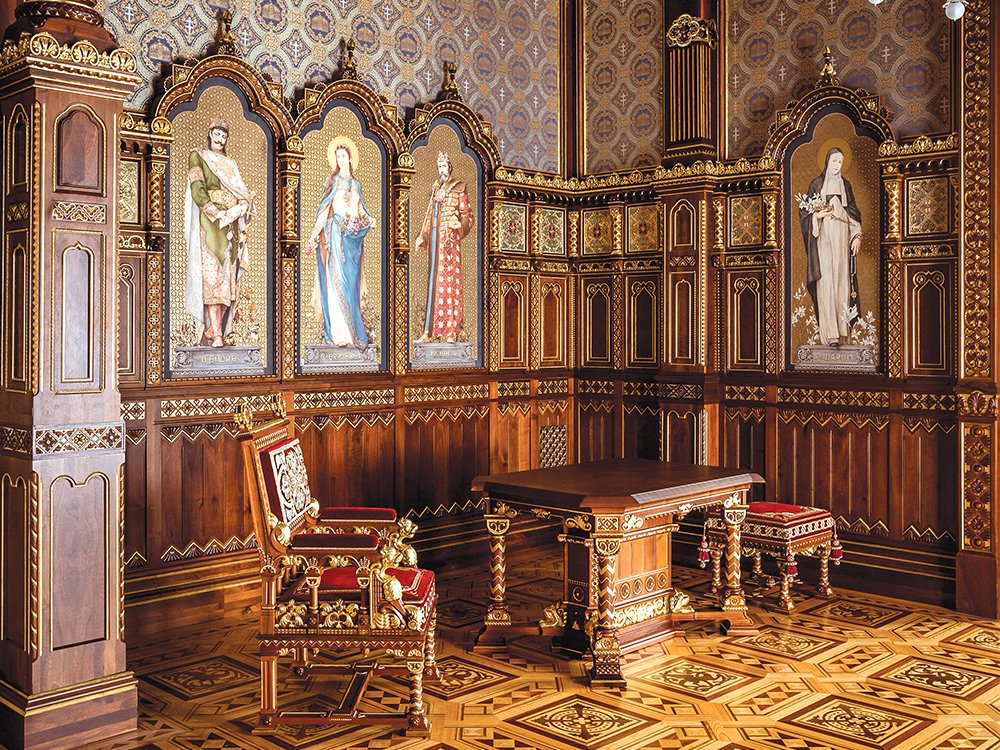


































Hozzászólások
Log in or register to comment!
Login Registration